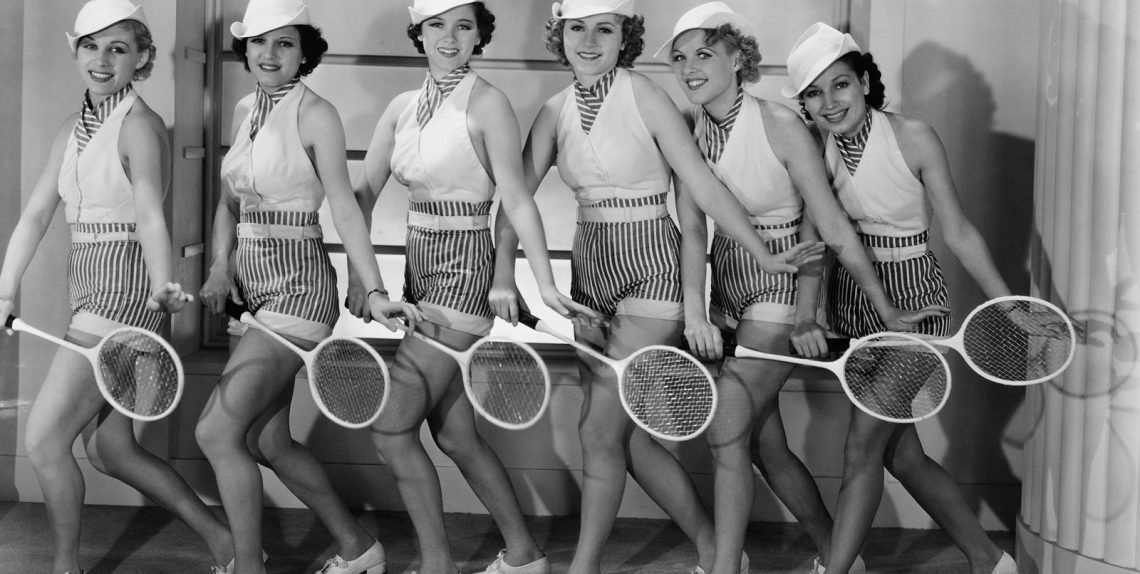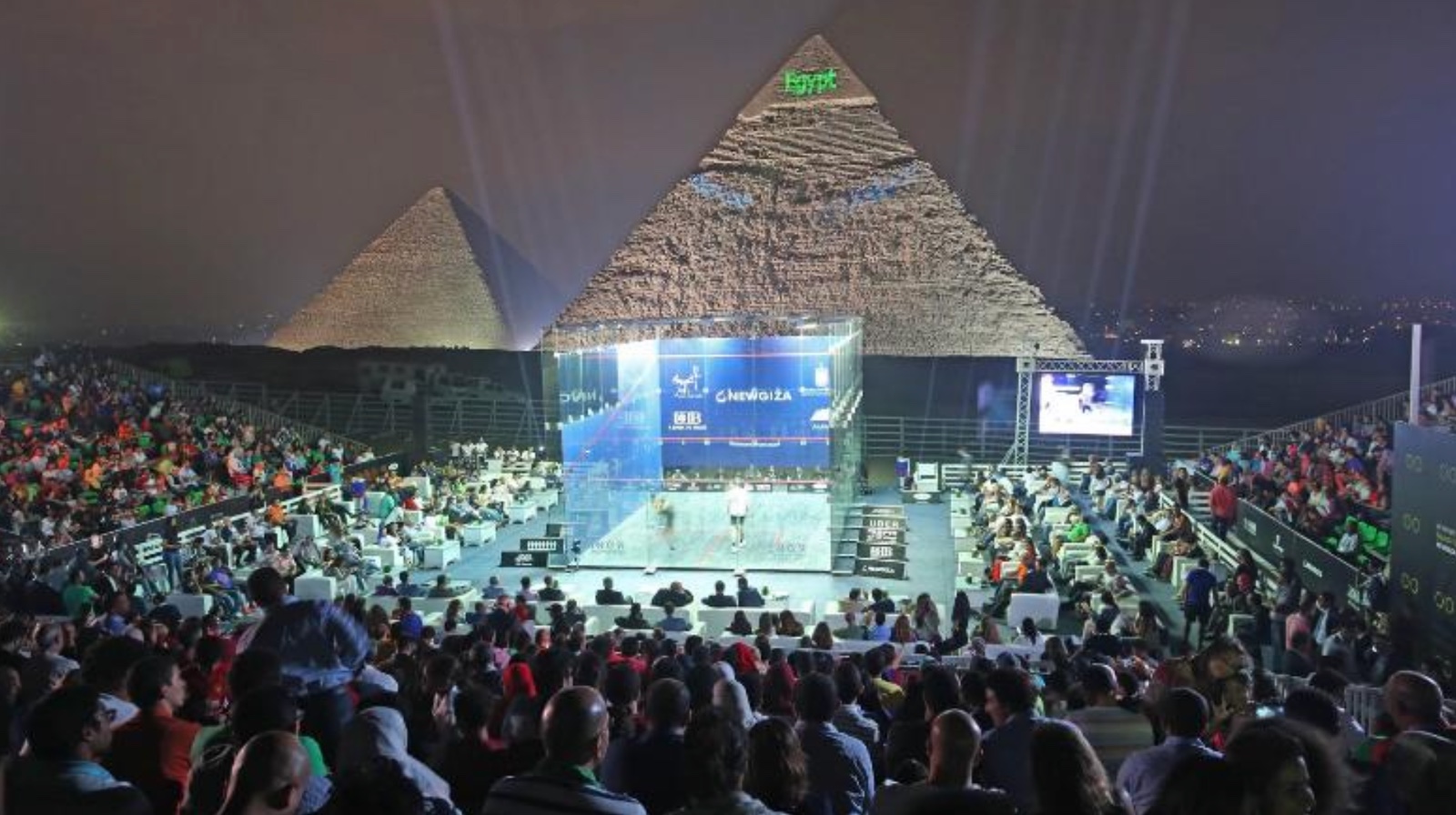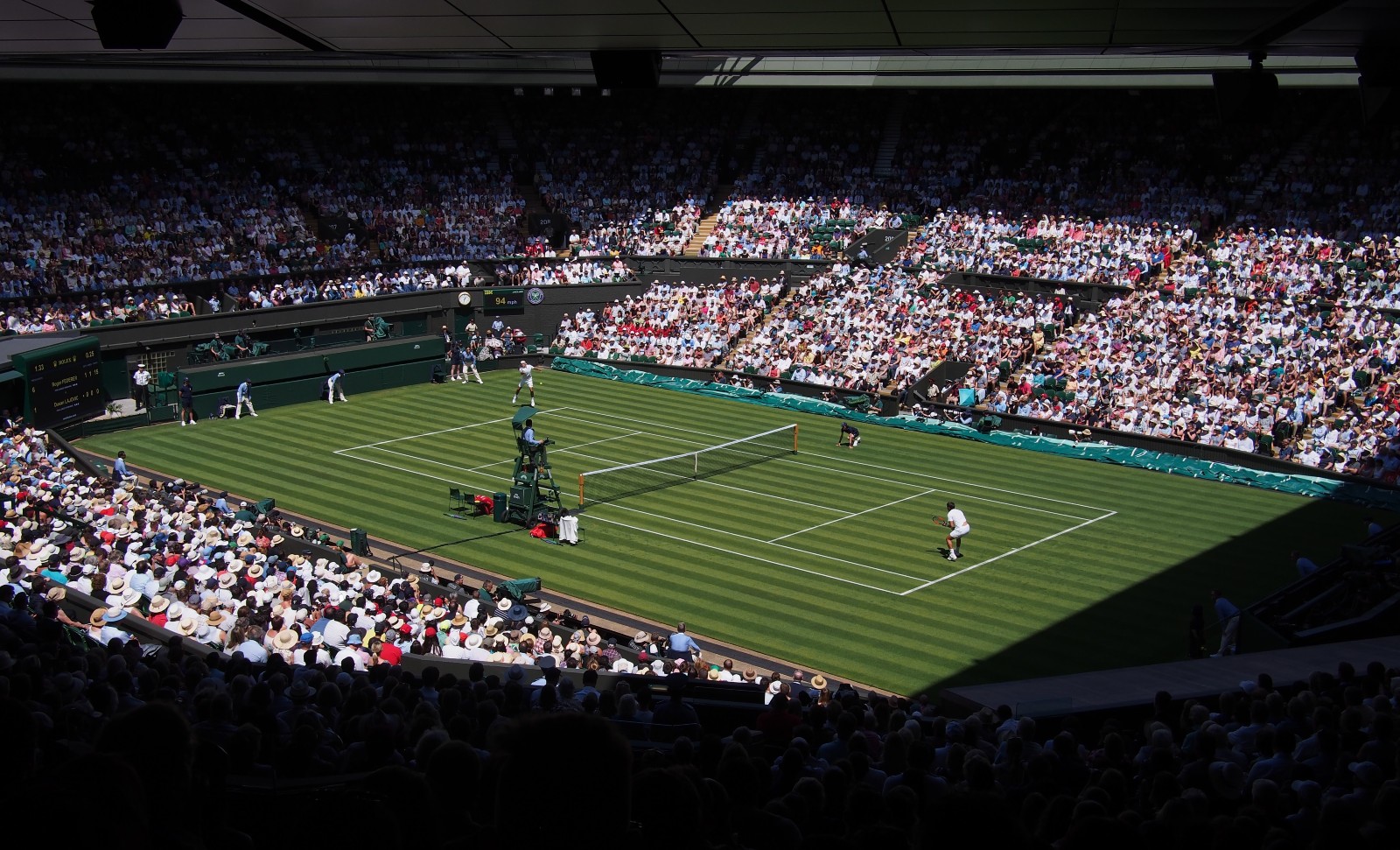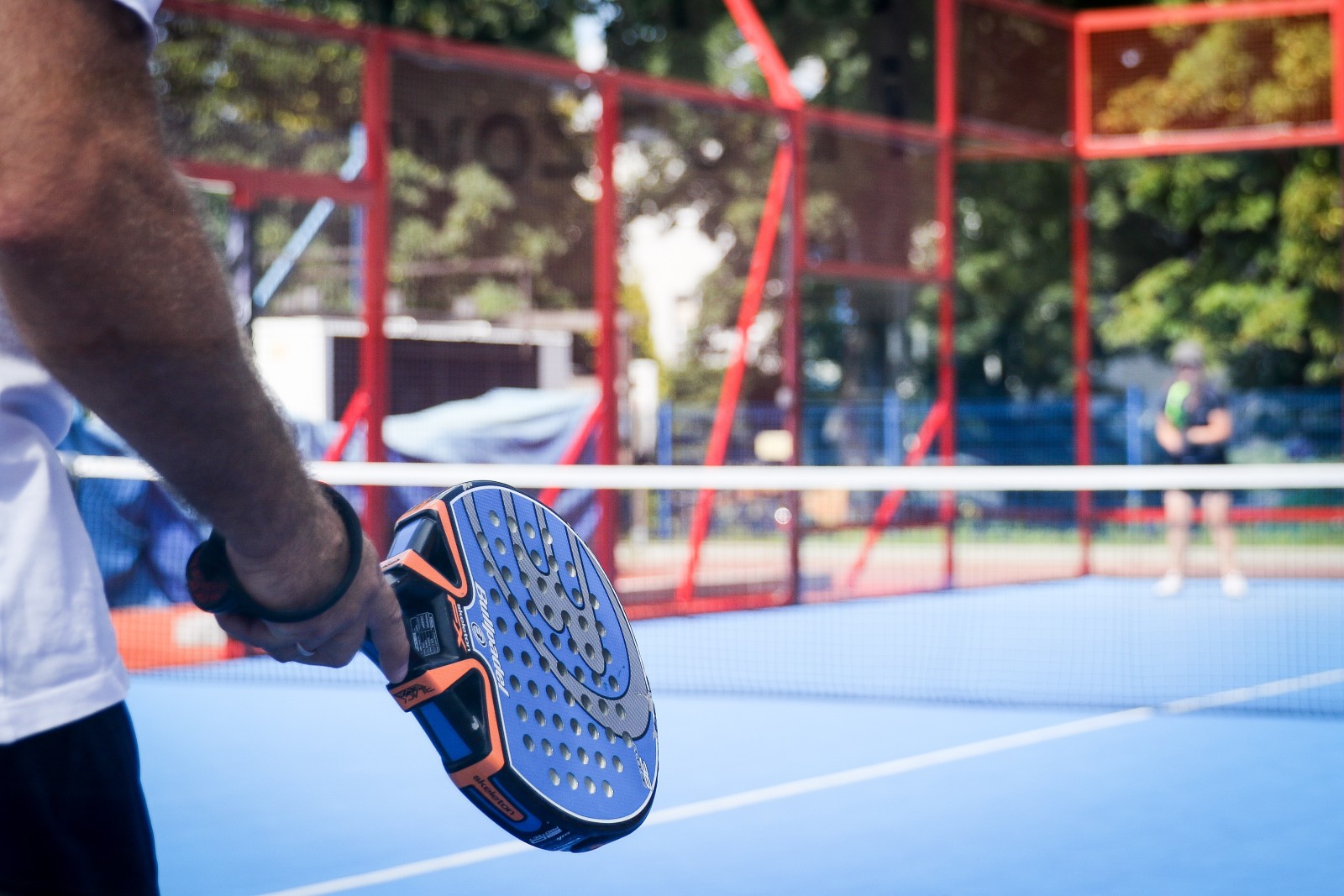https://enterprise.press/wp-content/uploads/2019/10/CIB-squash-at-pyramids-1600px.jpeg
Tennis is the safest midlife crisis we can think of. Deciding to pick up a racquet at, say, age 47 and learn the game from scratch is unlikely to get you fired. Spend too much time on the court? Your spouse is likely to do one of two things: Breathe a sigh of relief that you’re out of their hair (if they have any left) — or decide to join you on the clay. And no matter how much you blow on private lessons, court fees and ballboys, the risk to your financial health is nothing akin to that from deciding you’re some kind of next-gen Warren Buffett who knows that this is the memecoin that’s going to make you a quadrillion USD in a week.
Tennis is also awesome for you. Every point is a sprint. Strung together into games and sets, they become a marathon that demands power, endurance, finesse, mental toughness and the ability to think on your feet. And when you’re hooked? You’re hooked — it’s a sport folks can play into their 80s.
The biggest problem with picking a red Yonex V-Core 98 instead of a vintage Testarossa or other redhead as your midlife object of desire? It’s knowing where to start. And you’re in luck: The tennis subculture on the interwebs is (for the most part) warm, supportive, funny. Better still: It doesn’t pretend to be solving the global food crisis or doing anything more than helping newbies like us learn to hit a topspin forehand, sort out that hitch in your serve — or improve your singles strategy — at any age.
Here are some channels we’ve found super-helpful on our tennis “journey.”
ESSENTIAL TENNIS (Youtube | website) is run by Ian Westermann in some “flyover state” or another. Westermann has been on YT since 2009 and offers a massive back catalog packed with how-tos on technique and strategy. In years past he had excellent on-screen co-hosts who worked in his Wisconsin-based coaching business, including Kevin Garlington (see Total Tennis Domination, below). Garlington’s departure to a job in another state was a turning point for Westermann: He still pumps out instructional videos, but he’s now putting himself out there as a player: Chronicling in videos his return to competitive play, the rehab of a horrible on-court ankle injury, the rebuilding of his one-handed backhand.
The best part about Westermann’s channel (aside from the host’s fundamental likability) is the great cast of characters he’s assembled in the “Essential Tennis Universe,” including Mark Sansait (software developer by day, NRTP 5.0-rated pottymouth tennis player, pundit and emerging Youtuber at night) and Scott “Angry Old Man” Broady (goals for middle-aged guys and the channel’s very literate, zen-tennis philosopher). Broady, Sansait and a rotating cast of supporting characters regularly play singles and doubles matches on the channel against each other and “special guests.” Great commentary. Great learning experience. And great people.
What more could you ask for? Westermann’s book (naturally enough titled Essential Tennis) is new this month and getting great reviews. He’s spent the better part of the last month on a media tour of US tennis websites promoting it.
Starting point for newbies: The rules of tennis explained (scoring, terms and more) (watch, runtime: 7:55).
Must-watch gameplay series: Any one of the matches in ET’s “Play Your Court bracket challenge.”
TENNIS TROLL (Youtube) is tennis to which any middle-aged Egyptian can relate. The Atlanta-based channel features players of every age and skin color. Some have abs so taut they’d show a single bite of hawawshi — others look like they have nine hawawshi every morning for breakfast before washing it all down with a couple of fuul sandwiches and some fries. From elite college-level players to old guys with crappy second serves and strokes so ugly that only their mother could love them, they go by nicknames ranging from Wannabe Pro and Most Exhausting Player to Tennis Rodman, Tennis Psycho and 50 Year Old. But they’re putting themselves out there, playing on outdoor courts in the baking heat and humidity with smiles on their faces. If you love match play, Tennis Troll is a close second to Essential Tennis. Added bonus: characters here occasionally show up on ET and vice versa.
TOTAL TENNIS DOMINATION (Youtube | website) features Kevin Garlington, a former professional tennis player turned coach whose clean, crisp technique is rivaled only by his ability to break complex concepts down into chunks accessible to newbies and 5.0 players alike. (An NRTP 5.0-rated player is basically at the top of the recreational heap.) Garlington radiates intelligence and decency in videos that focus heavily on technique, though his recent piece on the four phases of a singles match highlights his strength on strategy, too. Garlington was a standout on Essential Tennis when he and his wife Megan worked with Westermann and it’s fantastic to see him coming into his own as a solo host.
TENNIS NERD (Youtube | website) is the got-to for anyone afflicted with GAS. Gear Acquisition Syndrome, not flatulence (not that we’ve ever suffered from either). Host Jonas is an accomplished (and steadily improving) player who recently binned his day job in marketing to make a go of his Youtube channel full-time. He’s your guide to racquets, strings, string setups and self-improvement — and he’s recently gotten into (pre-)match coverage informed by a deep understanding of the game, of the gear, and of the people who play.
MARK SANSAIT (Youtube | LinkedIn) is a leading character in the Essential Tennis Universe (above). A software developer by training, his PG-13 wit on ET morphs into R-rated territory on his eponymous channel. Sansait’s matchplay is brilliant to watch and his gear reviews are really on-point. Sansait also has some of the best editing, cinematography and graphics of any tennis Youtuber you’ll see, including some really tight drone work. We’re not deeply into his livestreams, but that’s just us. The guy is a talent — on court and off — on which to keep an eye.
TENNIS SPIN (Youtube | website) is quite possibly the most prolific of the tennis Youtubers, pumping out a new episode near-daily while running a tennis shop in the San Francisco Bay area. Coffee-addict Harry holds court on everything from new racquet releases to your grip size, the economics of tennis retail, the global supply chain nightmare, gender bias in tennis retail, and whether vintage wooden tennis racquets are worth collecting. Harry is witty, engaging and features a recurring cast of characters who help make each short (near) daily episode a delight.
ALSO WORTH YOUR TIME-
- Gladiators Tennis — simply excellent racquet reviews by two funny, engaging twentysomething pros based in Barcelona. (Youtube | Instagram)
- My Tennis HQ — tennis wisdom, match play and gear reviews from one of the top 200 players in the world (and current hitting partner of the women’s tour phenom Naomi Osaka). (Youtube | website)
- Tennis TV — Daily highlights from the ATP men’s world tour, including from the “Big Four” — the Australian, US and French opens as well as Wimbledon. (Youtube | website)
- WTA — The official Youtube channel of the women’s tour is nowhere as slick as the men’s, but the match highlights are stupendously awesome and the interviews occasionally compelling. (Youtube)
- Dill Plays — A top-ranked former college player making a go of it on Youtube with great match play and solid editing. (Youtube)
- 2MinuteTennis — Ryan rarely keeps it to two minutes, but his insight into technique, tactics, strategy and the rules of the game make his channel a must-watch. (Youtube | Website)




